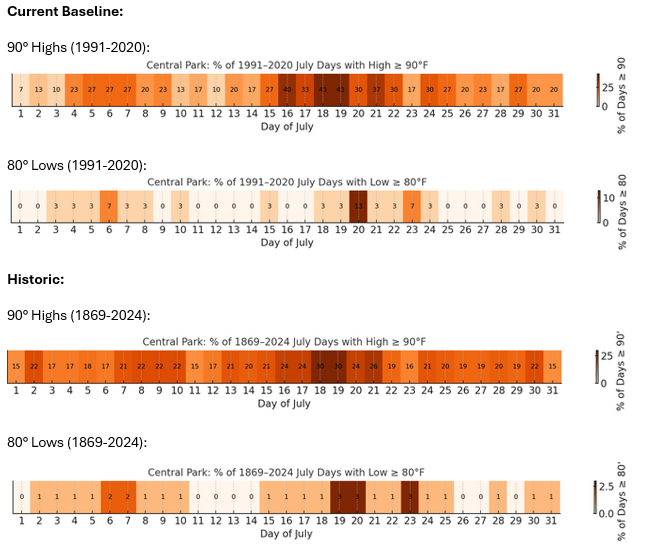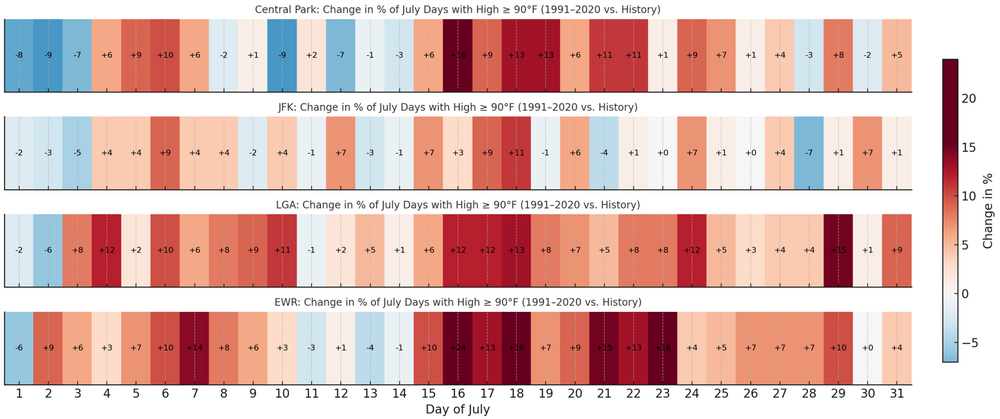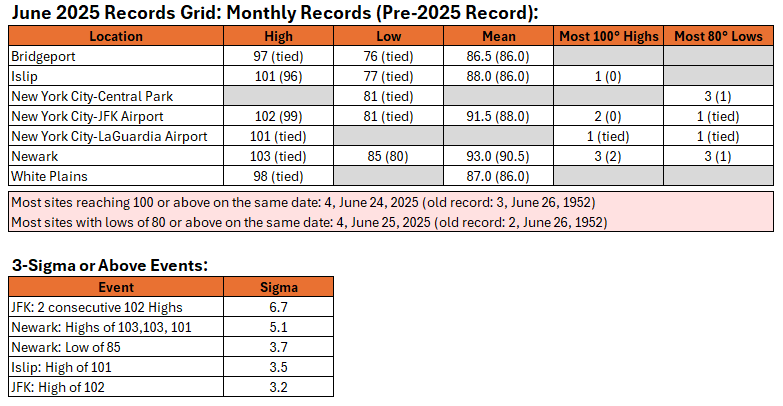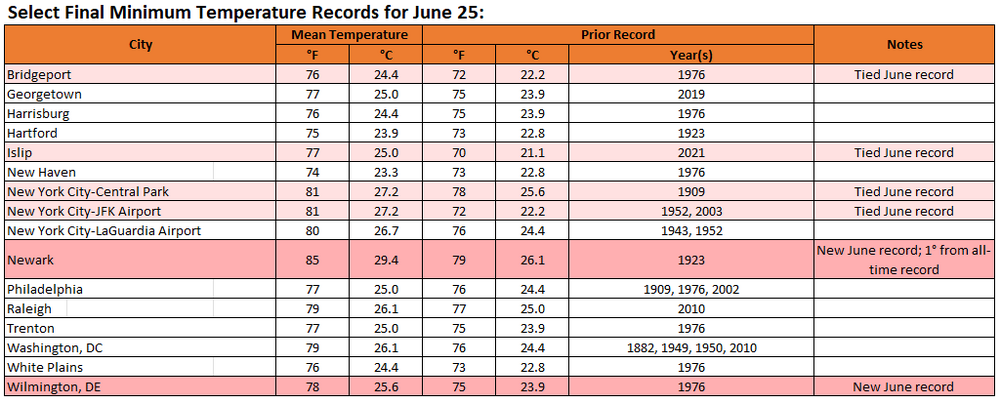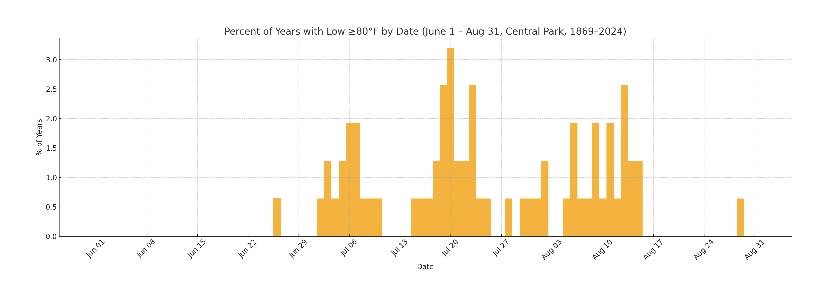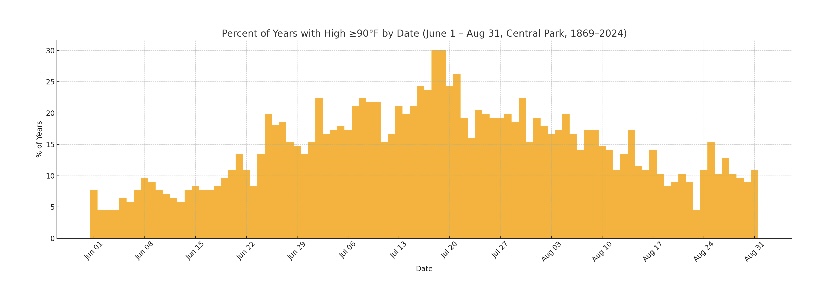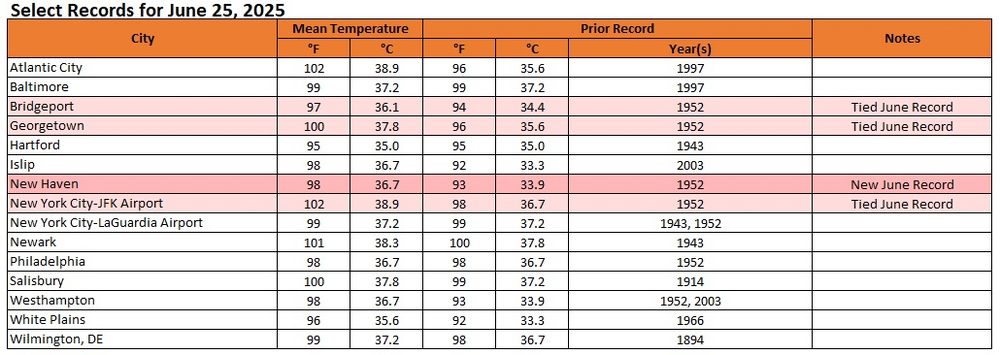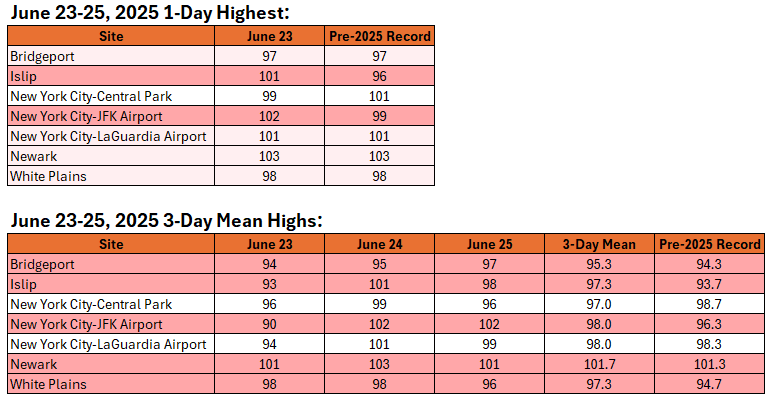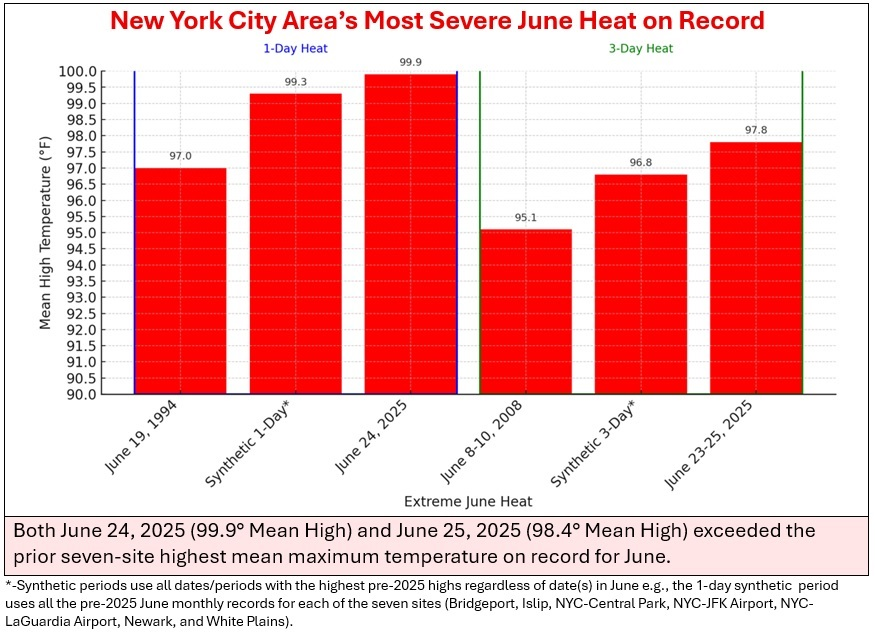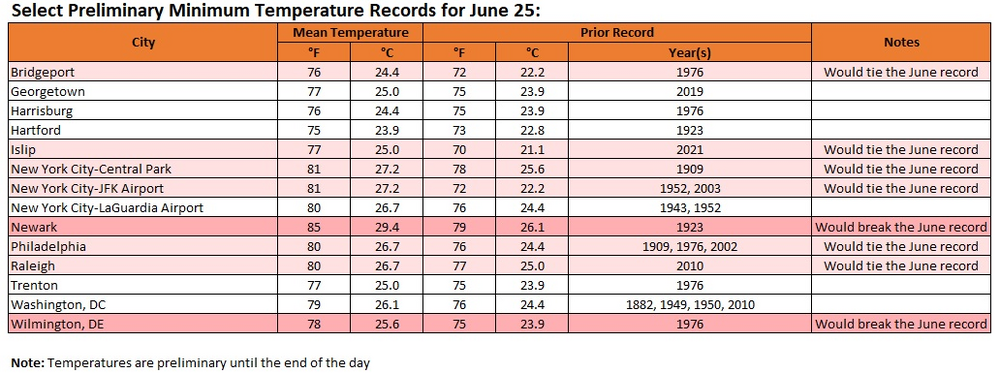-
Posts
21,800 -
Joined
Content Type
Profiles
Blogs
Forums
American Weather
Media Demo
Store
Gallery
Everything posted by donsutherland1
-
The 3 consecutive 100 degree days in 1948 occurred during August 26-28.
-

July 2025 Discussion-OBS - seasonable summer variability
donsutherland1 replied to wdrag's topic in New York City Metro
Below is some historic data on the frequency of 90° or above highs and 80° or above lows. The frequency of 90° lows has decreased in parts of the July while increasing during roughly the July 15-25 period. Central Park's dense tree cover has likely contributed to the decreased frequency in parts of July. Central Park has seen 10 days with a decrease, including five days with a greater than 5 percentage point decrease. The nearest station (LaGuardia) has seen an increase on all but 3 days in July. Newark has seen a decrease on only 4 days. Both LaGuardia and Newark saw a decrease of greater than 5 percentage points on one day. JFK is affected by the sea breeze, which adds to the variability. Nevertheless, JFK has seen a greater than 5 percentage point decrease on only one day. -
All the sites held onto their 80 or above lows yesterday.
-
Prior to 2025, here are the frequencies of 80 or above lows and 90 or above highs in Central Park during summer.
-
The New York City area's most severe June heatwave is now concluding. The June 23-25 period saw the highest composite mean high temperature for the New York City area and the highest 3-day composite mean high temperature. No other event comes close. It even beat the synthetic 1- and 3-day periods. The synthetic 1-day mean temperature included all the pre-2025 highest June temperatures on record for a one-day period. The synthetic 3-day mean temperature include all of the pre-2025 3-day periods with the highest June average high temperatures on record. Comparisons:
-
083 SXUS71 KOKX 251708 RERJFK RECORD EVENT REPORT NATIONAL WEATHER SERVICE NEW YORK, NY 107 PM EDT WED JUN 25 2025 ...RECORD DAILY HIGH TEMPERATURE SET AND RECORD MONTHLY HIGH TEMPERATURE TIED AT JOHN F. KENNEDY AIRPORT... THE HIGH TEMPERATURE REACHED 102 DEGREES SO FAR TODAY AT JOHN F. KENNEDY AIRPORT. THIS BREAKS THE OLD DAILY RECORD OF 98 DEGREES, SET IN 1952. THIS ALSO TIES THE MONTHLY RECORD OF 102 SET YESTERDAY, JUNE 24TH 2025, MAKING TODAY TIED FOR THE HOTTEST JUNE DAY ON RECORD AT THIS SITE. THIS PRODUCT WILL BE UPDATED THIS AFTERNOON SHOULD TEMPERATURES CONTINUE TO RISE. RECORDS GO BACK TO THE YEAR 1948 AT THIS CLIMATE STATION. ALL CLIMATE DATA ARE CONSIDERED PRELIMINARY UNTIL REVIEWED BY THE NATIONAL CENTERS FOR ENVIRONMENTAL INFORMATION (NCEI). $$
-
Historical tidbit while temperatures climb. Since 1869, Central Park has had 39 days with low temperatures of 81° or above. All 39 days had highs of 90° or above. The lowest high occurred on July 3, 1876 when the low was 81° and the high was 90°.


